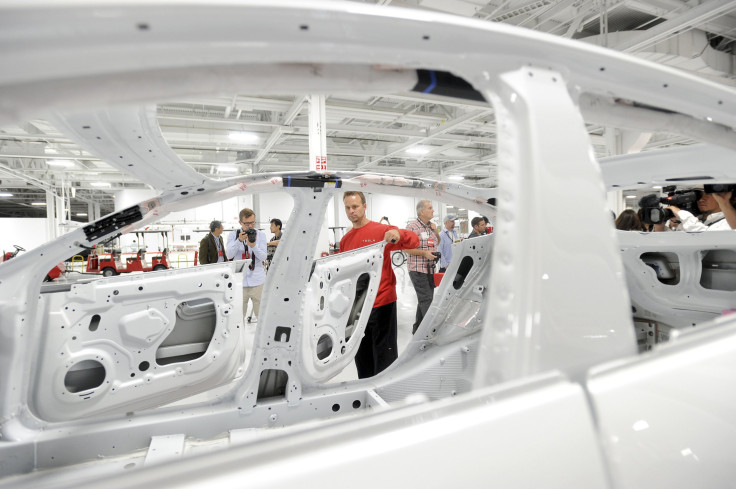Tesla Motors (TSLA) Q2 Production Rises, Deliveries Fall

Tesla Motors, Inc. increased its production in the second quarter by 20 percent, compared with the January-March period, producing just short of 2,000 cars per week. But the electric car maker faltered on its deliveries during the April-June quarter, which fell over 15 percent short of the company’s target and also 3 percent from its deliveries in the previous three-month period.
The Elon Musk-owned company released a statement Sunday — right in the middle of a long weekend — that said it produced 18,345 vehicles during the second quarter, a “steep production ramp” that led to “almost half of the quarter’s production” to occur “in the final four weeks. With continued productivity improvements, Tesla expects output to reach 2,200 vehicles per week in Q3 and 2,400 vehicles per week in Q4.”
The automaker added that the current and projected production levels are in line with “current order rate trends and backlog.” However, Tesla seems to be having a difficult time getting the produced cars from the manufacturing plant to its customers.
It delivered only 14,370 vehicles — 9,745 Model S and 4,625 Model X — during the second quarter, falling well short of its stated target of 17,000 deliveries and declining from the 14,810 vehicles it delivered during the previous quarter. The quarter was the second consecutive one where the company fell short of its delivery targets.
Tesla cited its increased production and a very high number of vehicles in transit as the reasons for lower deliveries. It said 5,150 vehicles were on their way to customers at the end of June, and were expected to be delivered early in the ongoing third quarter. The automaker expects to produce and deliver 50,000 vehicles in the last six months of 2016, the statement added. The total deliveries for the year will certainly fall short of the company’s target of between 80,000 and 90,000 vehicles.
The company has been increasing its production as it prepares to meet the production deadline for Model 3, its mass market sedan, which was ambitiously brought forward by two years.
The National Highway Traffic Safety Administration launched an investigation into the 2015 Tesla Model S last week after a driver was involved in a fatal crash while using the car’s “Autopilot” self-drive feature, the most advanced of its kind used in commercial cars yet.
The company’s stock took a hit a couple of weeks ago when CEO Musk announced a $2.86 billion all-stock offer to buy SolarCity Corp., where Musk is chairman and largest shareholder. However, the stock revived quickly, climbing over 12 percent during last week.
© Copyright IBTimes 2024. All rights reserved.





















